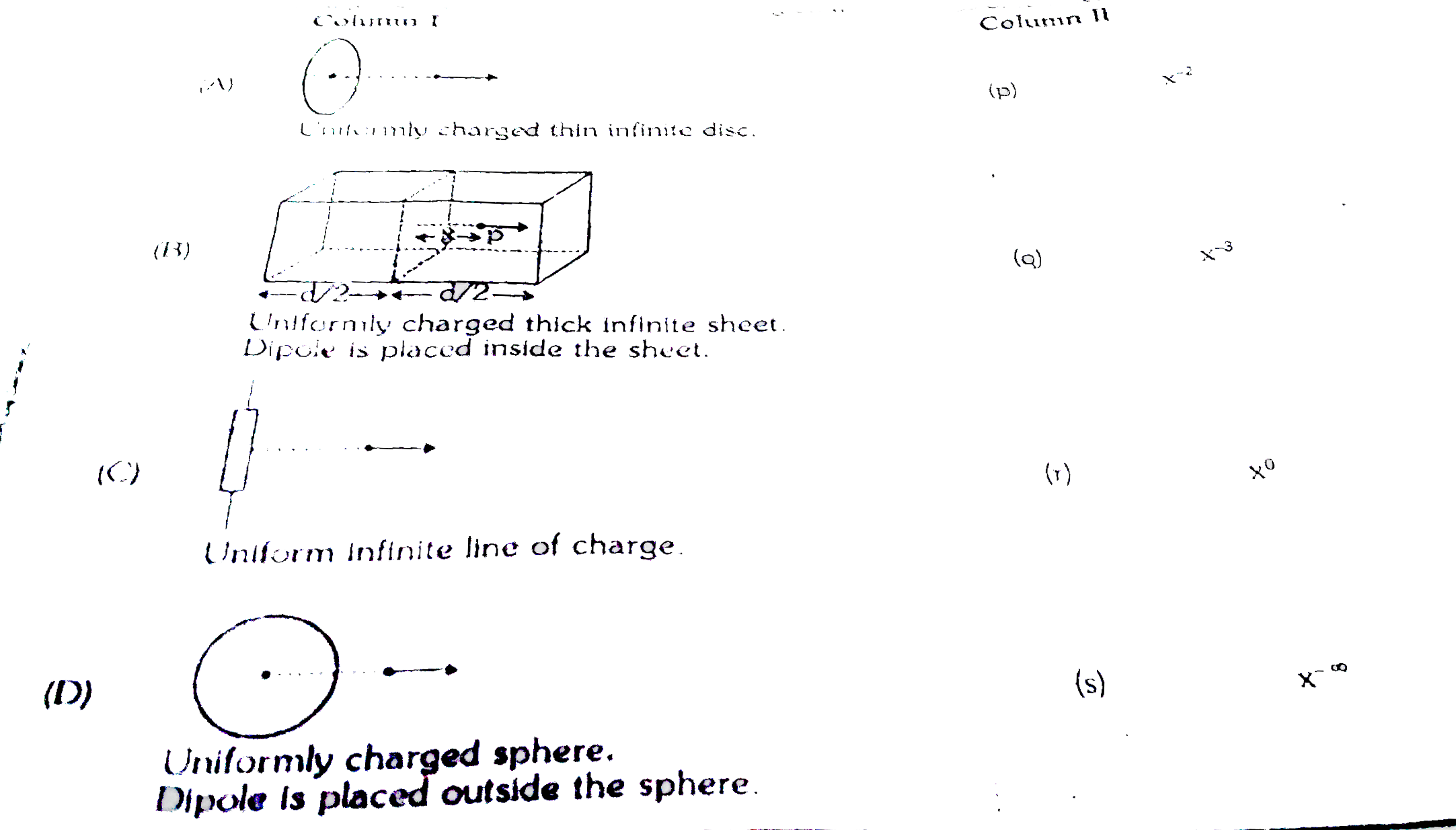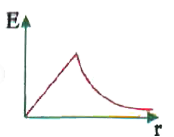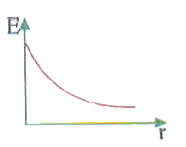Column I shows charge distribution and column II shows electrostatic field created by that charge at a point r distance from its centre.
The correct Answer is:A(s),B(q),C(t),D(r,s)
Topper's Solved these Questions
- ELECTRIC CHARGES AND FIELDS BOOK - AAKASH INSTITUTECHAPTER - ELECTRIC CHARGES AND FIELDS EXERCISE - SECTION-G(INTEGER ANSWER TYPE QUESTIONS)
1 Videos
- ELECTRIC CHARGES AND FIELDS BOOK - AAKASH INSTITUTECHAPTER - ELECTRIC CHARGES AND FIELDS EXERCISE - SECTION-H( MULTIPLE TRUE-FALSE QUESTIONS)
10 Videos
- ELECTRIC CHARGES AND FIELDS BOOK - AAKASH INSTITUTECHAPTER - ELECTRIC CHARGES AND FIELDS EXERCISE - SECTION E(ASSERTION -REASON TYPE QUESTIONS)
10 Videos
- DUAL NATURE OF RADIATION AND MATTER BOOK - AAKASH INSTITUTECHAPTER - DUAL NATURE OF RADIATION AND MATTER EXERCISE - ASSIGNMENT (SECTION-D)
10 Videos
- ELECTROMAGNETIC INDUCTIONBOOK - AAKASH INSTITUTECHAPTER - ELECTROMAGNETIC INDUCTIONEXERCISE - ASSIGNMENT(SECTION -D) Assertion-Reason type Question)
15 Videos
Similar Questions
Column I shows different charge distributions and short electric dipole at a distance x from the charge distributions. Column II gives the dependence of force acting on the dipole as of function of x.

View SolutionColumn I shows distributionof electric field liness and column II shows charge distribution . Match the columns.
Column I Column II(A)Straight lines but not parallel(p)Uniformly distributed charged shell(B)Straight lines but parallel (q)Uniformly distributed charged long rod(C)Curved lines(r)Uniformly distributed infinite charged sheet(D)Some regions where no lines are present(s)Electric dipole(t)Any conducting material
View Solution
Knowledge Check
Which one of the following graphs represents the variation of electric field with distance r from the centre of a charged spherical conductor of radius R?
A B
B C
C D
D
A sphere of radius R, is charged uniformly with total charge Q. Then correct statement for electric field is (r = distance from centre): -
AKQrR3, where r<RBKQr2, where r≥RCit is zero, at all pointsD(A) and (B) both
Column I shows distributionof electric field liness and column II shows charge distribution . Match the columns.
Column I Column II(A)Straight lines but not parallel(p)Uniformly distributed charged shell(B)Straight lines but parallel (q)Uniformly distributed charged long rod(C)Curved lines(r)Uniformly distributed infinite charged sheet(D)Some regions where no lines are present(s)Electric dipole(t)Any conducting material
View SolutionMatch the following
Column IColumn II(A)E∝1r2(p)Point charge(B)E∝r(q)Spherically symmetric charge distribution(C)V∝1r(r)Long line charge(D)V2−V1=f(r2r1)(s)Plane sheet of charge(E)V2−V1∝r2−r1(t)Electric dipole
View SolutionMatch the following
Column IColumn II(A)E∝1r2(p)Point charge(B)E∝r(q)Spherically symmetric charge distribution(C)V∝1r(r)Long line charge(D)V2−V1=f(r2r1)(s)Plane sheet of charge(E)V2−V1∝r2−r1(t)Electric dipole
View SolutionDraw a plot showing the variation of (i) electric field E, and (ii) electric potential V with distance 'r' due to a point charge Q.
View SolutionDraw a plot showing the variation of (i) electric field (E ) and (ii) electric potential (V) with distance r due to a point charge Q.
View SolutionMatch the column
Column IColumn II(A)A stationary positive charge(p)Exert electrostatic force on other charge directly(B)A stationary negative charge(q)Produces electrostatic field directly(C)A stationary electrically neutrally object(r)Acceleration in the direction of electrostatic field(D)Electrostatic field(s)Accelerates opposite to the direction of electrostatic field(t)Cannot exert force on itself
View Solution
